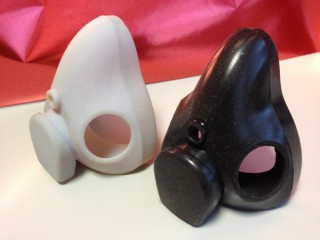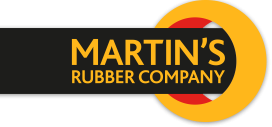Rapid Prototyping or Rapid Manufacture, that’s the Question
Posted on 06/08/2013 Category: Technical Features

We often get get asked whether Rapid Prototyping (RP) rubber is the future, rather than traditional materials and methods of manufacture, and this is a difficult question to answer with many aspects to it. The exciting technology that is 3D printing has been around for some years now, and we have been very interested to see how the range of products that can be made is developing, and how some of our key customers are using them. While it was originally expected that Rapid Prototyping would be aimed at just that – prototyping – recent developments in materials mean that in particular, resin based Rapid Prototype products are now becoming routinely used as production ready parts going straight into direct service on functional assemblies, and metallic RP materials are becoming much more widely available with advancing technology. Rapid Prototype “rubber-like” materials remain a difficult problem to solve however it seems, and the current materials, whilst soft, compliant and giving a reasonable feel for the eventual product, do not have the physical strength, surface finish or environmental resistance needed for many real world applications. In contrast, where additive manufacturing scores for metallic, thermoplastic and resin components is the ability to “grow” complex organic shapes that are impossible to machine, mould or cast by conventional means, yet are actually made in a suitable material that is functional for the application. This is giving rise to some exciting avenues for design and material innovation where extreme strength combined with light weight can make the economics of these processes very viable. So, this highlights the inherent issue with Rapid Prototyping currently; even for prototype parts it is often the case that either the materials that can be processed are not suitable for the real applications requested, or if production runs of RP parts are being considered, the economics are not viable on a production basis. This is where Rapid Manufacture comes into its own in our industry, where the “rubber-like” RP materials available simply do not have the physical properties of the traditional thermoset rubbers that provide product functionality. The recent advances in CAD/CAM facilities and Rapid Machining mean that it is now a very realistic option to manufacture a real mould tool in a highly compressed lead time to produce the real product in the real material, so that the actual functional performance intended by the designer is delivered by the part. The distinction between prototype, pre-production and production status is therefore becoming even more blurred than it was prior to the advent of RP technologies. The investment that Martin’s Rubber has made in the last few years in leading edge Hypermill machining software coupled with machining centres like the DMG DMU50 5 axis range mean that actual production tools can be delivered when necessary in far shorter leadtimes than was previously possible, with the result that customers can get to work with real products very rapidly. A recent example of this was an Oxygen Mask, where the grey RP part pictured above was generated from the 3D design model. It was a good representation in terms of assessing the form and fit of the design, but was too fragile to be realistically tested and developed, so a full production steel tool was machined in a compressed leadtime, with the black coloured real parts delivered to the customer well before the rest of the items required for assembly became available from other sources. This allowed the customer to sign off his design with the end user with the confidence that when the ancilliary parts arrived, the final assembly would be fully functional. So, while Rapid Prototyping has made enormous advances in recent years with materials and capability, and will continue to progress, the improvement in Rapid Machining capabilities means that traditional materials and production methods remain very relevant, and it is part of the service we provide to help the customer decide on the most appropriate ways to proceed with any project given the outcomes that are required, whether this is Rapid Prototyping or Rapid Manufacture.
The post Rapid Prototyping or Rapid Manufacture, that’s the Question appeared first on Martin’s Rubber Company.


